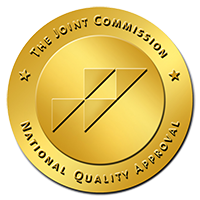BBGH Laboratory Dept. impressed The Joint Commission quality/safety surveyor

Members of the BBGH Laboratory Department are, l-r: Gail Burke, MT; Morgan Enyeart, MLT; Marina Girard, MT; Olivia Harris, Phlebotomist; Angie Valdez, MT. Inset photos, l-r: Bridget Amm, MLT; Jim Kayras, MT; Aleece Calarco-Wagner, Phlebotomist (4 yrs.); and Tyler Wagner, MT.
Every two years the Box Butte General Hospital Laboratory Department is surveyed by The Joint Commission (TJC) to make sure it meets that organization’s standards for accuracy and safety. The latest survey conducted over three days last month, May 10 through 12, set a new standard for the department, with only one direct impact finding and seven indirect impact findings found … out of 1,200 standards that have to be met. In other words the Laboratory team met 99.4 percent of the survey’s standards, an almost unheard of attainment rate. Direct impact findings are requirements that, if not met, are likely to create an immediate risk to the safety of quality of care, treatment, or services. Indirect impact findings are requirements that pose less immediate risk to the care & safety of the patient than direct impact requirements.
“The surveyor was very complimentary,” reported Laboratory Manager Gail Burke, MT. “At the end he said we had a highly functioning lab and was very complimentary of the laboratory staff and essentially the whole hospital. He had to go observe other departments, for example our Infusion Department and Emergency Department staff, and he just was impressed with everyone. One thing he stressed at the end was the fact that we had only eight findings found out of 1,200 standards he reviewed, which is pretty impressive.”
While laboratory surveys by TJC are conducted every two years, TJC surveys of hospitals are every three years. Lab surveys, as stated, cover 1,200 standards compared to approximately1,000 standards hospitals have to meet for TJC accreditation. Usually lab surveys last two days, but it was expanded to three days this year because Ms. Burke chose to do Individualized Quality Control Plan testing this year. “I did approximately 15 of those tests, which is essentially where you do a risk assessment to determine if you need to do Quality Control (QC) more or less often than you already are, but you can’t do it less than what the manufacture suggests. Anyway, that added another day to the survey.”
A typical survey of that time frame will see the surveyor go over all the 1,200 standards mentioned, delving into pre-analytical, analytical and post-analytical testing phases. Pre-analytical is the specimen collection process. Analytical is the actual testing of the specimen and the post-analytical is the reporting of that specimen. The surveyor will go back as far as two years to examine records. “What the survey does is what they call tracer activity. They pick some cases, often knowing what they want to test before they come. They’ll take a patient from the minute they are admitted to our facility to the minute they were dismissed, looking at what happens to them, what was done, what procedures they had … all of that. They do that with current patients as well as records of past patients back to two years.”
Ms. Burke had nothing but good things to say about her seven member staff. “This is a very good staff,” she concluded. “I second the surveyor’s comments that they run a well-functioning department. They are very competent at what they do and work great together as a team.”
The lab staff consists of personnel who have been with the hospital ranging from 33 years to six months. They are: Bridget Amm, MLT (1 yr.); Ms. Burke, MT (33 yrs.); Morgan Enyeart, MLT (7 yrs.); Marina Girard, MT (31 yrs.); Olivia Harris, Phlebotomist (1 yr.); Jim Kayras, MT (6 mos.); Angie Valdez, MT (3 yrs.); Aleece Calarco-Wagner, Phlebotomist (4 yrs.); and Tyler Wagner, MT (6 mos.).
Box Butte General Hospital is an equal opportunity provider and employer.


